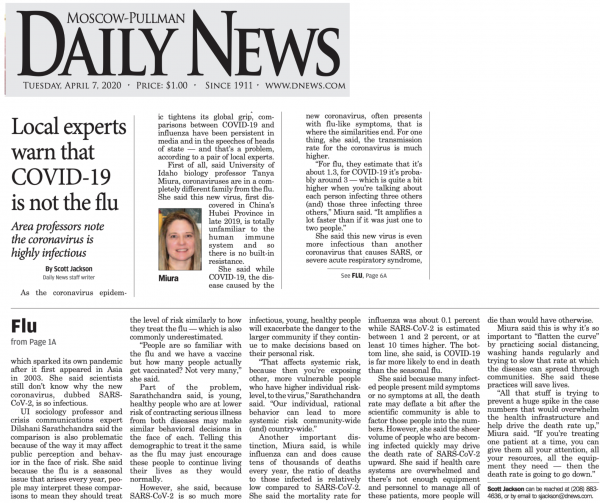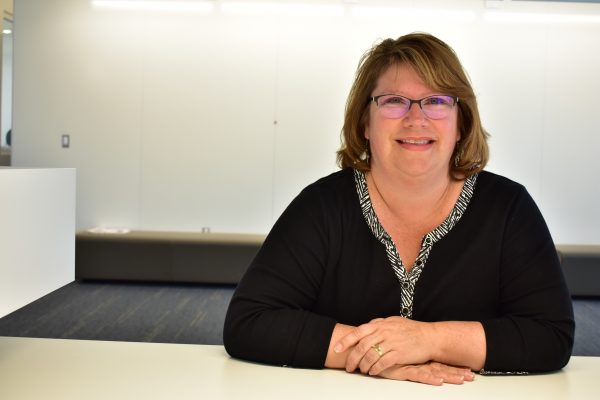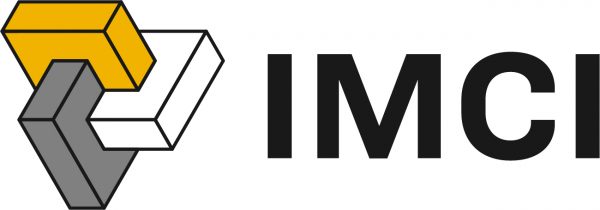Experts across the nation are using modeling to help make decisions regarding how to respond to COVID-19. But knowing the infection rate in New York or an estimated death toll in Washington state doesn’t really help our great state of Idaho.
To address Idaho’s specific rural population, age distribution and travel, modeling researchers at Boise State University, Idaho State University, Lewis-Clark State College and Washington State University have joined forces to model intervention strategies specific to Idaho’s unique circumstances. These models are designed to help the Idaho Governor’s Coronavirus Working Group and local leaders throughout the state make data-driven policy decisions.
IMCI participant, mathematician and U of I biomedical researcher Dr. Benjamin Ridenhour is one of many scientists working long hours on this project. He was recently interviewed by KTVB7. The following news piece was written by Brian Holmes.
Idaho leaders looking at state-specific COVID-19 model to guide decisions
The model developed by researchers at the University of Idaho and four other colleges differs dramatically from other models people are talking about.
Author: Brian Holmes
Published: 6:12 PM MDT April 15, 2020
Updated: 7:00 PM MDT April 15, 2020
BOISE, Idaho — A model developed for the Idaho Governor’s Coronavirus Working Group shows the effects of mitigation efforts, such as social distancing and stay-at-home orders, in slowing the spread of COVID-19.
The Idaho Dept. of Health and Welfare, the University of Idaho, and four other colleges and universities developed the model.
It’s designed to help the governor’s working group and local leaders around Idaho make data-driven policy decisions and identify which strategies are effective in reducing the impact of COVID-19.
Health and Welfare Director Dave Jeppesen said in a news release Wednesday that based on the model’s multiple assumptions and scenarios, “we can conclude that continued mitigation efforts are effective in slowing the spread of COVID-19, reducing contact rates, delaying the peak of the outbreak, and flattening the curve.”
According to Health and Welfare, when mitigation measures are stopped, the model shows a second wave of infections unless testing and contact-tracing capacity increases so infections can be identified, and contacts isolated.
Jeppesen added that the model was not necessarily developed to estimate the number of hospitalizations or deaths from COVID-19.
Many government leaders in the region have been looking at another model, from the University of Washington, which uses data based on what happened earlier this year in Wuhan, China, where the COVID-19 coronavirus was discovered.
Dr. Benjamin Ridenhour, a biomedical researcher with the math department at the University of Idaho in Moscow, said that model is too simplistic.
The Idaho-specific model that Ridenhour has been working on since January takes into account such things as Idaho’s rural population, age distribution, and travel between cities.
It’s a better fit than the UW model for Idaho’s decision-makers.
However, Ridenhour said, it’s not perfect, as the data Idaho researchers need to build an even better model hasn’t always been available, at least not consistently, anyway. For example, hospital capacity, length of hospital stays, and how much testing is being done.
“Those are important when it comes to lifting interventions or putting more interventions in place,” Ridenhour said.
Another piece of information that’s been hard to nail down, but something many people are asking about: How many people who’ve been infected with COVID-19 have recovered?
“Unfortunately we are not able to get recovery numbers,” Ridenhour said. “We’re left using data about new infections … and trying to infer how long it takes people to recover.”
Ridenhour said another challenge is obtaining data about the large numbers of people carrying COVID-19 who never show symptoms and never go to the doctor.
He also said a lack of testing, or a backlog, hinders the model.
“We don’t know exactly how many positives there actually are out there, so that slows things down a bit. That’s the backlog bit,” Ridenhour said.
Researchers at Boise State University, Idaho State University, Lewis-Clark State College and Washington State University partnered with University of Idaho faculty to model intervention strategies.
The Idaho State Board of Education on March 18 sent out a request to institutions of higher learning for a state-specific model.
Holly Wichman, director of UI’s Institute for Modeling Collaboration and Innovation, organized and coordinated the modeling effort.
A team of researchers presented the model to the Board of Education and Health and Welfare on March 20.
More detailed information about the model is available below, or through this link (pdf file).



